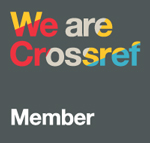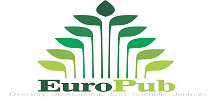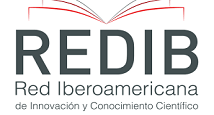Effect of the App Miro in the achievement of collaborative learning in students of an institute
DOI:
https://doi.org/10.51440/unsch.revistaeducacion.2022.20.243Keywords:
collaborative learning, Miro app, digital tools.Abstract
The research addresses the problems of the students of the Food Industry Program at the Federico Uranga Institute of Public Technological Higher Education, who during the development of their virtual sessions in the course of Fundamentals of research, did not evidence collaborative learning, and it is that they did not apply the ideal technological tools for this purpose, for this reason, the decision was made to apply an Intervening Plan applying didactic strategies and students using digital tools. The objective of the research was to determine the effect of the Miro App on the achievement of collaborative learning in students of the Institute, for this, the positivist paradigm was used, pre-experimental design, the sample was constituted by 28 students of the Food Industry Studies Program. The instrument used was a Likert-type survey which was previously subjected to its validity and reliability. The results obtained using Wilcoxon's statistical T test indicated that there were significant differences between the pretest; where 42.43% was obtained and the intervention program was completed, the postest 94.21%. The general hypothesis was contrasted and a Z=-4.628 was obtained. Which showed that the application of the Miro App favorably influences the achievement of collaborative learning, with statistically significant difference (p<0.05), se logró validar la hipótesis de estudio ya que los logros fueron significativos.
Downloads
References
Arrieta, M., Campo, A. P., Villegas, E., & Maestre-Meyer, M. (n.d.). Taller “Diseña tu aula invertida”: Estrategia masiva de formación docente. Retrieved February 22, 2022, from https://www.researchgate.net/publication/349925187
Brioso, X., & Calderon-Hernandez, C. (2022). Teaching Design Management tools during a pandemic: A Peruvian case study. IOP Conference Series: Materials Science and Engineering, 1218(1), 012036. https://doi.org/10.1088/1757-899X/1218/1/012036
Carhuancho-Mendoza, I. M., Nolazco Labajos, F. A., Sicheri Monteverde, L., Guerrero Bejarano, M. A., & Casana Jara, K. M. (2019). Metodología para la investigación holística. Uíde, 120. https://n9.cl/t0s2
Chiappe, A., & Wills, A. E. (2021). Crowd-based Open Online Education as an alternative to the Covid-19 educational crisis. Ensaio: Avaliação e Políticas Públicas Em Educação, 30(114), 32–51. https://doi.org/10.1590/S0104-403620210002903341
Dunbar, S., Tucker, J. S., Morales, M., Fahrion, A., & Watkins, S. L. (2022). #NicotineAddictionCheck: Puff Bar Culture, Addiction Apathy, and Promotion of E-Cigarettes on TikTok. International Journal of Environmental Research and Public Health 2022, Vol. 19, Page 1820, 19(3), 1820. https://doi.org/10.3390/IJERPH19031820
Fontanilla, M. A., Villegas, E., Aguas, R., & Meyer, M. M. Estudio virtual en Miro: Mapas de actividad para el aprendizaje colaborativo.
Guerrero, C. S. (2010). APRENDIZAJE COOPERATIVO E INTERACCIÓN ASÍNCRONA TEXTUAL EN CONTEXTOS EDUCATIVOS VIRTUALES.
Heinimäki, O. P., Volet, S., Jones, C., Laakkonen, E., & Vauras, M. (2021). Student participatory role profiles in collaborative science learning: Relation of within-group configurations of role profiles and achievement. Learning, Culture and Social Interaction, 30, 100539. https://doi.org/10.1016/J.LCSI.2021.100539
Hernández-Sellés, N. (2021). Herramientas que facilitan el aprendizaje colaborativo en entornos virtuales: nuevas oportunidades para el desarrollo de las ecologías digitales de aprendizaje. Educatio Siglo XXI, 39(2), 81–100. https://doi.org/10.6018/EDUCATIO.465741
Hidalgo-Suárez, C. G., Llanos Mosquera, J. M., Bucheli Guerrero, V. A., Hidalgo Suárez, C. G., Llanos Mosquera, J. M., & Bucheli Guerrero, V. A. (2021). Una revisión sistemática sobre aula invertida y aprendizaje colaborativo apoyados en inteligencia artificial para el aprendizaje de programación. Tecnura, 25(69), 196–214. https://doi.org/10.14483/22487638.16934
Jiménez-Olmedo, J. M., Basilio, P., Penichet Tomás, A., Sebastià Amat, S., Sanchis Soler, G., Chinchilla-Mira, J. J., GarcíaJ aen, M., Bernal-Soriano, M. del C., & Villalon-Gasch, L. (2020). Team-Based Learning (TBL) a través de herramientas tecnológicas educativas José. Memòries Del Programa de Xarxes-I3CE de Qualitat , Innovació i Investigació En Docència Universitària . Convocatòria 2019-20 Memorias Del Programa de Redes-I 3 CE de Calidad , Innovación e Investigación En Docencia Universitaria . Convocatoria 2019-20, December, 1293–1296.
Manzano-León, A., Rodríguez-Ferrer, J. M., Aguilar-Parra, J. M., Fernández-Campoy, J. M., Trigueros, R., & Martínez-Martínez, A. M. (2022). Juega y aprende: influencia de la gamificación y aprendizaje basado en juego en los procesos lectores de alumnado de secundaria. Revista de Psicodidáctica, 27(1), 38–46. https://doi.org/10.1016/J.PSICOD.2021.07.001
McClanahan, L. G. (2021). Virtually Viral Hangouts: Reflections on the role of community during crisis. Journal of Media Literacy Education, 13(3), 137–140. https://doi.org/https://doi.org/10.23860/JMLE-2021-13-3-12
Meroño, L., Calderón, A., & Arias-Estero, J. L. (2021). Pedagogía digital y aprendizaje cooperativo: efecto sobre los conocimientos tecnológicos y pedagógicos del contenido y el rendimiento académico en formación inicial docente. Revista de Psicodidáctica, 26(1), 53–61. https://doi.org/10.1016/J.PSICOD.2020.10.002
Moreno-Caro, J., López-Vargas, O., Sanabria-Rodríguez, L., Moreno-Caro, J., López-Vargas, O., & Sanabria-Rodríguez, L. (2021). Regulación interpersonal en el trabajo colaborativo: efectos en la comprensión lectora y la autorregulación de estudiantes con diferentes estilos cognitivos. Folios, 54, 3–30. https://doi.org/10.17227/FOLIOS.54-11403
Montaña, H. A. S. (2020). La metodología de las 3P aplicada a los procesos de enseñanza aprendizaje en optometría. Documentos de trabajo Areandina, (2).
Morón-Hernandez, J. L., Velásquez-Zea, I. L., & Cortez-Cordova, M. G. (2021). Influencia de los textos lúdicos en la producción de textos de estudiantes universitarios. Revista Educación, 19(19), 150-164. https://doi.org/10.51440/unsch.revistaeducacion.2021.19.197
Oballe-Peinado, Ó., Castellanos-Ramos, J., Navas-González, R., Sánchez-Durán, J. A., Rosas-Cervantes, D., & Daza-Márquez, A. (2021). Evaluación de un Laboratorio Remoto de Electrónica Digital. 5th International Virtual Conference on Educational Research and Innovation, 344–348. https://www.civinedu.org/conference-proceedings-2021/
Patiño, P. A. Á. (2020). Investigación para potenciar el aprendizaje responsable y colaborativo. Revista Universidad EAFIT, 55(175), 144–149. https://publicaciones.eafit.edu.co/index.php/revista-universidad-eafit/article/view/6476
Pillpe, G. R., & Inca, K. S. M. (2022). Storytelling como estrategia didáctica para la producción de textos en estudiantes de un instituto. Puriq, 4, e279-e279.
Riquelme, A., Pastor-Navarro, J. L., Prats, Á., Jordá-Bordehore, L., Robles-Marín, P., Robles-Azorín, J., Díaz-Castañeda, E., & Pérez-Rey, I. (2020). Dinamización de la enseñanza de Geología Aplicada a la Ingeniería Civil mediante la herramienta online Kahoot!: una experiencia educativa. La Docencia En La Enseñanza Superior. Nuevas Aportaciones Desde La Investigación e Innovación Educativas, 839–846. http://rua.ua.es/dspace/handle/10045/110240
Roatta, S., & Tedini, D. (2021). La pandemia del Covid-19 y el aprendizaje semipresencial en la educación superior. Revista Iberoamericana de Tecnología En Educación y Educación En Tecnología, 28, e39. https://doi.org/10.24215/18509959.28.E39
Rodríguez-Chávez, M. H., & Rodríguez Chávez, M. H. (2021). Sistemas de tutoría inteligente y su aplicación en la educación superior. RIDE. Revista Iberoamericana Para La Investigación y El Desarrollo Educativo, 11(22), 175. https://doi.org/10.23913/RIDE.V11I22.848
Sampieri, R., Fernández, C., Sampieri, L. B.-R., de, M., & 2014, undefined. (n.d.). Definiciones de los enfoques cuantitativo y cualitativo, sus similitudes y diferencias. Academia.Edu. Retrieved February 22, 2022, from https://www.academia.edu/download/58257558/Definiciones_de_los_enfoques_cuantitativo_y_cualitativo_sus_similitudes_y_diferencias.pdf
Wiencek, F. (n.d.). HoloMuse-Augmented Reality in der musealen Vermittlung Related papers
Downloads
Published
How to Cite
Issue
Section
Categories
License
Copyright (c) 2022 Julia Liliana Morón-Hernández, Guillermo Romani-Pillpe, Keila Soledad Macedo-Inca

This work is licensed under a Creative Commons Attribution-NonCommercial 4.0 International License.





















